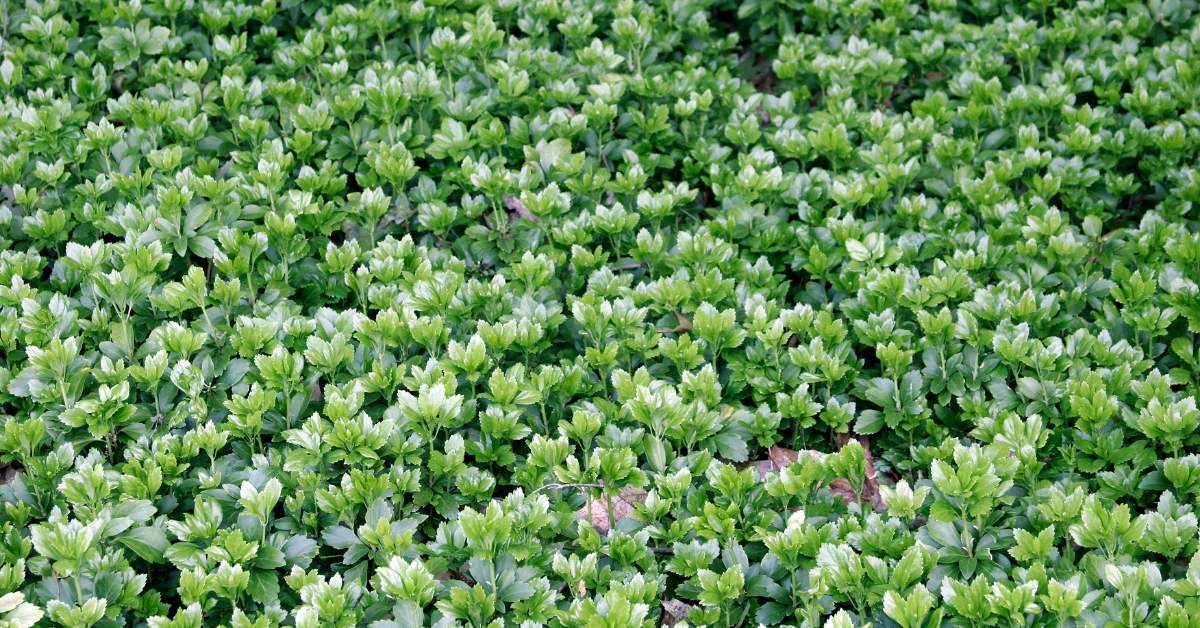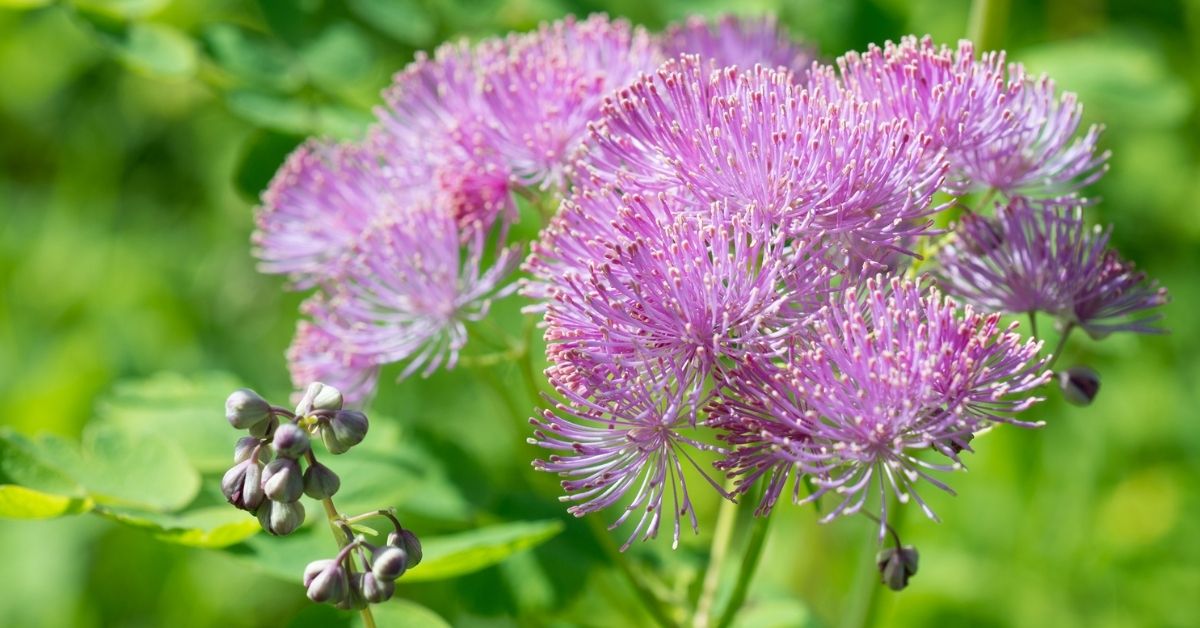California poppy (Eschscholzia californica) is a small-flowering native North American plant. Found throughout the western US, it is an attractive small poppy-like flower. Having said that, it can become very weedy very quickly if given garden conditions to its liking. Here is the information you need on how to grow the California Poppy plant.
Description of Plant
This is a small poppy with well-branched blue-green foliage from 2 to 18 inches tall (although there are recorded taller plants) in general.
The flowers are carried on single stems and are various shades of yellows through oranges.
They tend to flower sporadically throughout the summer.
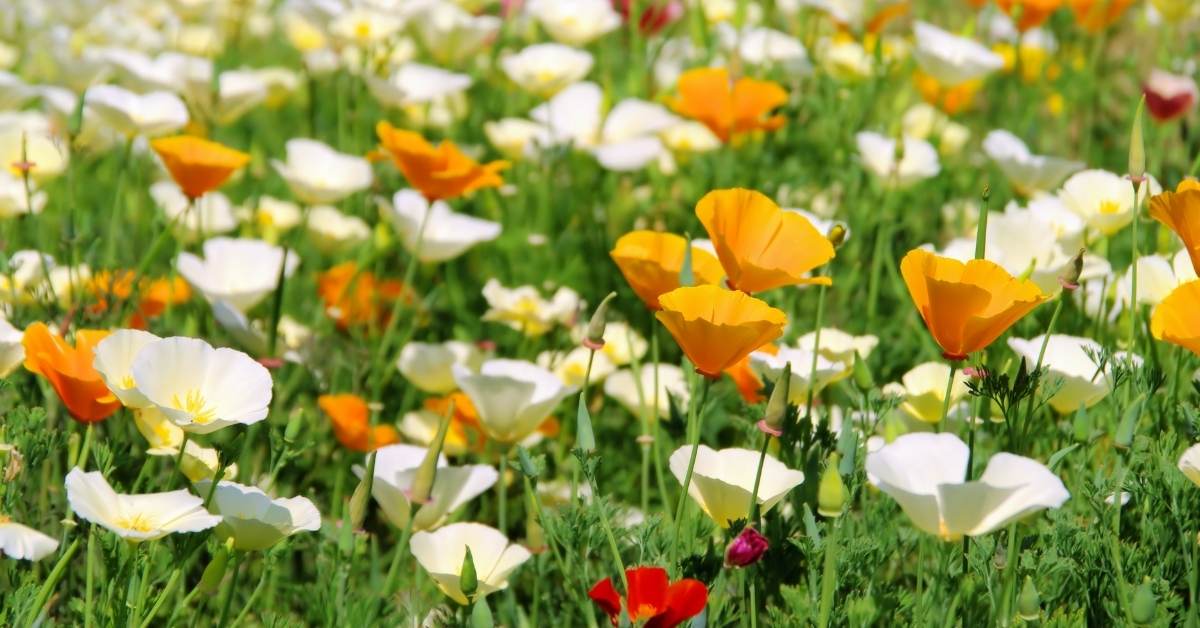
The lovely California Poppies
California poppies are one of the world’s most loved plants. Their cheery blooms will liven up any quiet corner in your garden, and their versatility means that you can use them in a multitude of locations in your outside oasis.
They are also extremely easy to grow, and while they are only annual in nature, they will produce hundreds of seeds to ensure that you have flowers in your garden for years to come.
Whether you’re a novice or seasoned gardener, California poppies manage to maintain their constant appeal, mainly because of the great variety of benefits that they bring.
California poppies can be sown in-situ for the ultimate ease in growing by simply scattering seeds across the ground and lightly watering them in during late spring.
These poppies also work well when planted in seeds trays if you want to get a head start on the outside growing season.
For the earliest possible flowers, California poppies can also be sown in the autumn and kept in frost-free conditions throughout the winter so that you get a very early bouquet of beautiful spring flowers.
California poppies are also incredibly versatile and can be grown in a great array of places. If you only have a windowsill or small balcony, then these poppies are absolutely perfect, and they will grow easily in pots.
Filling any place with flowers, they will quickly cascade over the edges of hanging baskets and window boxes to create colorful displays which will wow all visitors.
Planted at the edge of flower borders, they are ideal for grabbing your attention and filling gaps between flowerbeds and lawns or paths. Meanwhile, a number of smaller and dwarf specimens also exist.
These are brilliant for planting in graveled areas such as sparsely planted driveways and work amazingly in rockeries, adding a flash of quintessential poppy color to areas where you may least expect it.
As long as you continually deadhead your plants, California poppies will also flower throughout the garden season, adding beautiful color to your garden. They come in a great range of hues, from vibrant orange and pink to softer tones of pastel whites and yellows.
Varieties such as Carmine King and Apricot Chiffon offer even more fantastic displays as their bi-colored petals give an even wider range of beauty.
Towards the end of the growing season, ahead of the first frosts, it is a good idea to leave a couple of flowers on specimens so that they can ripen. In the cooling climate, these pods will quickly start producing hundreds of seeds that can be harvested and stored before planting again in autumn or spring.
This allows you to plant lots of new specimens for the following year, once again filling your garden with these wonderful flowers to a colorful outlook throughout the year. And whether you’re just starting out in gardening or have been enjoying the hobby for many years, the love of California poppies remains as strong as ever.
How To Grow the California Poppy Plant?
Grow this plant in the full sun in sandy soil. Clay soils will not produce great plants, nor will they winter in clay.
Once established, this plant is highly drought tolerant.
If you live in a warmer climate, you can expect this plant to self-sow (perhaps becoming quite weedy).
My zone 4 gardens would occasionally produce a self-sowing California poppy, but for the most part, they are considered hardy annuals here in the North.
In colder climates, you can spread seeds in the spring to germinate naturally or start them indoors. Either method works well.
Poppy Seeds – California Poppy Rosa Romantica
There is a wide variety of California poppy seeds to choose from, and filling your garden with as many as possible may become a fun hobby. Beautiful white types like White Linen bloom early in the spring, while bright Jelly Beans come in a rainbow of colors to delight borders with brilliant color. The Rosa romantic, with its peaceful name, is one of the most lovely kinds.
This California poppy, as the name suggests, has rose-colored petals. On the other hand, the petals are patterned with extra colors of salmon pink and light yellow, resulting in a spectacular and eye-catching flower. Rose Romantica adds a unique touch to any garden with its double petalled flowers.
Like all California poppy varieties, Rosa romantic is an annual that blooms lavishly throughout the year until succumbing to the first frosts. On the other hand, this plant produces hundreds of poppy seeds at the end of its flowering year, which you can simply harvest and store for sowing new plants the following year.
Rosa romantic looks best when planted in big groups on its own because of its beautiful bloom. Filling a container, hanging basket, or window box with this stunning variety will create a spectacular display that will always make you stop and look.
Meanwhile, if you’re going to plant it on a border, make sure you have a contrasting backdrop to show off the flowers truly. And once you’ve planted poppy seeds in your garden, you’ll never want to be without them.
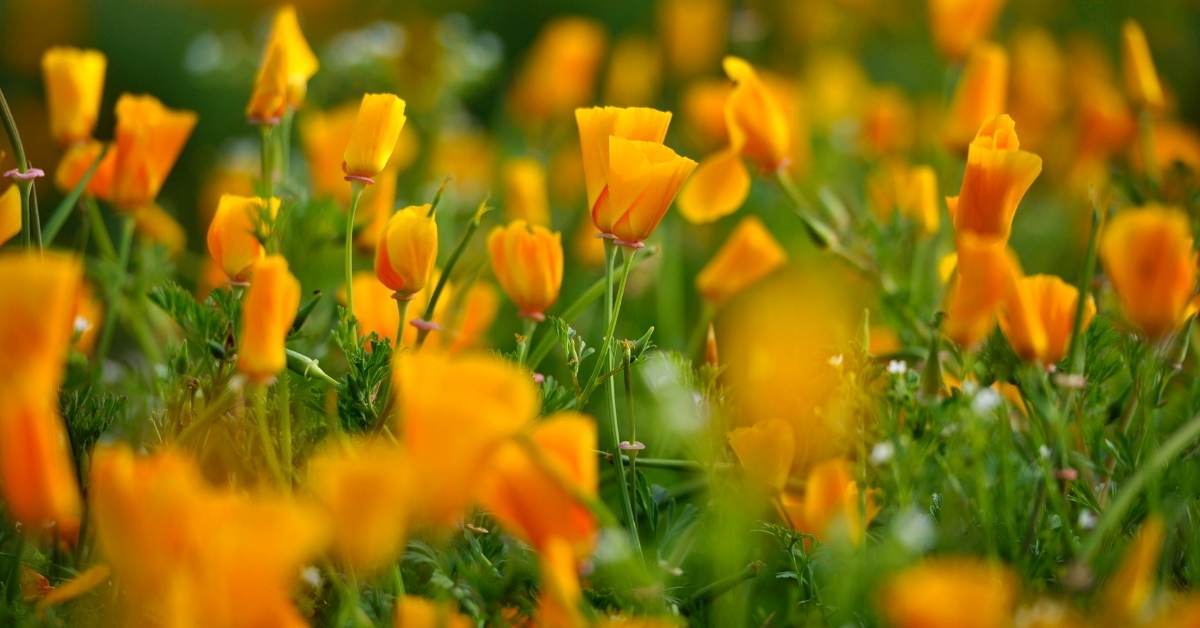
Use Dwarf California Poppies for Paths and Patios
California poppies have so many uses in the garden it’s hard to imagine any space without them. Not only available in a stunning range of colors, but you can also buy plants in a range of sizes, with some beautiful dwarf varieties available.
While these little poppies are a brilliant substitute for pots and containers and also work well in rockeries, using them in your paths and patios is an excellent way of bringing color to some areas most in need of it.
If you have a natural-looking garden and want plants creeping out from between stones and nooks to mimic nature, then using dwarf California poppies is a must. Because of their small, nature won’t spill across large areas, and block routes but will simply rise out of dull areas, bringing beautiful leaves and colorful blooms.
Gravel areas are perfect, and you can plant a few seedlings in clumps to create little mounds of color. Meanwhile, if you have a little crack in a pavement, or want to break up an expanse of patio area with some plants, then you can use dwarf varieties of California poppies.
Several smaller poppies exist, perfect for use on paths and patios. Apricot Chiffon is a double petalled flower of yellow and intense orange edges, while Purple Gleam will bring soft lavender shades to any blank canvas.
Rose Chiffon, meanwhile, is a stunning flower, with bubblegum pink blooms clashing with a soft yellow center. And once you’ve used dwarf poppies in this way, you’ll soon wonder why you never brought life to those dull areas before.
White Linen – A California Poppy Perfect for Spring
You may associate California poppies with the heat of summer, as blazing sunlight falls down on hot gardens. Bright colors of orange, red, pink, and yellow fill the front of borders as California poppies create a dazzling collage of beautiful, cheerful blooms.
But, if you want to find an incredible California poppy that is ideal for the spring months, then White Linen is perfect.
White Linen is a gorgeous California poppy variety that thrives in the slightly cooler weather of the spring. As the weather is still warming up and gearing towards the hot summer months, this variety produces a plethora of crisp, white flowers which will quietly glint in the sunlight.
Each bud consists of four delicate flowers, creating a white saucer between two and three inches wide. Before many other varieties have come into flower, White Linen will be surprising you with fresh new blooms. And as long as you remember to deadhead as petals fade, you can ensure that this variety flowers as long as possible.
Like many of the California poppy family, White Linen is ideal for pots, window boxes, and the front of borders. While other varieties such as Mission Bells or Carmine King are still young seedlings you plan to plant in later months;
White Linen can already be created as a cascade of beautiful white. Planted early in pots and then transported into its final flowering place, you can ensure a spring of crisp white alongside the traditional bulb blooms of the season. And by including White Linen in your collection, you can extend the number of months in which you can enjoy California poppies.
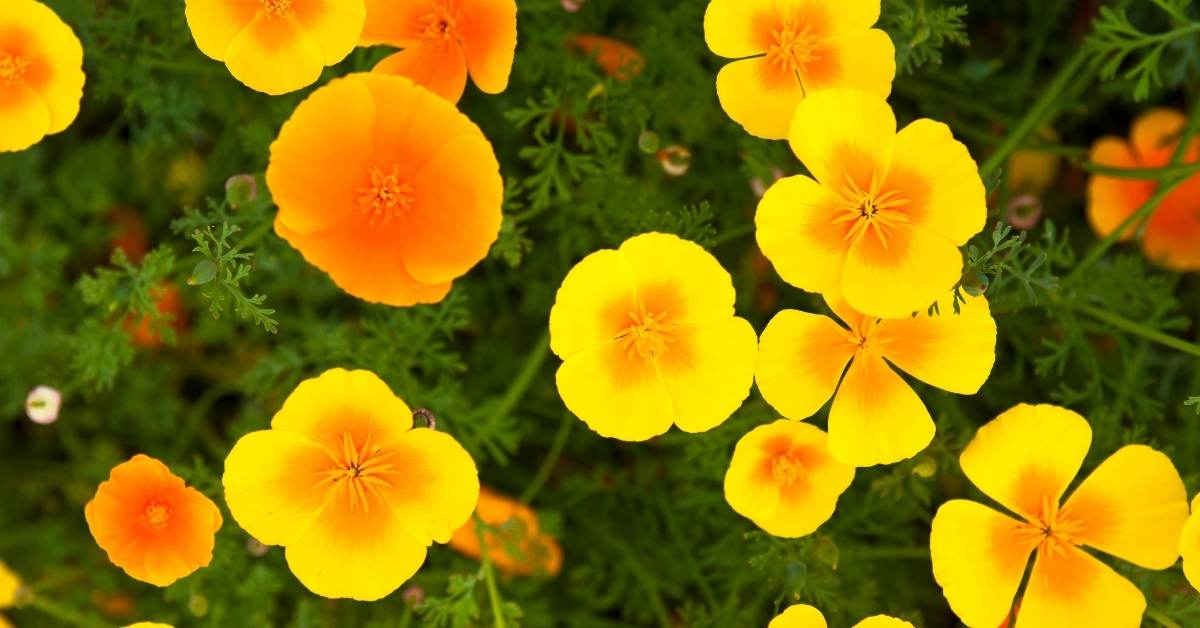
Creating Stunning Poppy Containers
If you want to create stunning plant containers filled with color and interest, then using California poppies is definitely the right choice for you. These plants are very easy to grow from seed, can be mixed into planters in different colors or with other plant varieties, and will provide bountiful blooms throughout the gardening year.
And with seeds cheap to buy and simple to germinate, you can brighten up any spot in your home with vibrant potted containers.
California poppies will grow just about anywhere, meaning that you can fill any vacant spot in your home with color. Hanging baskets, window boxes, porch planters, and other containers on patio or decking areas can be filled with California poppies to bring bright and cheerful colors to the garden.
As these poppies are an annual species, you can pack plants in tightly so that they grow into a mass of feathery leaves and beautiful flowers, making even the dullest of areas full of color.
Each plant will strive for the light and try and produce as many blooms as possible, ensuring that, as long as you keep containers watered and have used a good compost, you will have flowers for months.
For continued flowering, keep deadheading plants through the months so that California plants produce more and more buds. If you’re brightening shady areas with containers, move pots into sunny positions every few days to give plants that little extra light.
And by using poppies to bring life to windowsills, hanging baskets, and other areas of your home, you can enjoy cascading flowers throughout the growing year.
Fill in the Gaps with California Poppies
No matter how tirelessly they work in their garden, most gardeners will get some gaps in their borders at some point.
Perhaps plants have died over the winter due to harsh weather, or the changing garden seasons have left an area of the garden looking untidy, colorless, and unloved. These gaps can often make the difference between having a good garden and a great garden, and they can quickly be filled in with California poppies.
You may think that the best way of dealing with these gaps in planting is to quickly dash to the garden center and buy a load of small plants. However, not only will this cost a considerable amount of money, but it also takes some expert knowledge to consider all the requirements that new plants may need.
However, by simply planting a few California poppy seeds, you can fill these gaps in no time with bright, colorful flowers, which you needn’t worry about the long-term needs of.
As California poppies are annual, they will quickly thrive in most areas of gardens and therefore are perfect for covering gaps in beds and borders. Proliferating, you can fill sparse areas with color, and at the end of the season, simply remove them to allow other maturing plans space to breathe.
The following year you may find that existing planting is mature enough for no gaps to be seen. Alternatively, you can simply repeat your planting process using poppies to fill in the spaces.
Additional Tips for Growing California Poppies in Trays
While you can easily sow California poppies straight into the ground where you want them to flourish, a great way of starting seedlings off well is to germinate them in seed pots or trays. Growing in such a way allows you to nurture seedlings into large, strong, and healthy individuals.
While you may take every care to look after seedlings outside, they are subject to the elements, and sharp frosts or a sudden attack of slugs could reduce your California poppies to not much more than a few green stems.
There are many benefits for growing California poppies in seed trays to start with, and as long as you follow a few tips, you’ll have a great abundance of flowers to fill your garden with later in the year.
Sow Lightly
As with most sowing, try and spread seeds as evenly as possible when planting California poppies. It is often best to use trays rather than pots as you can distribute seeds more evenly, giving germinating seeds room to grow.
You don’t want seeds clustered in one spot because they’ll all be trying to use the same soil nutrients. So by sowing evenly, you can ensure that every California poppy seed gets its best start in life.
Cover Seeds
While you can simply scatter California seeds on the soil’s surface and wait for them to germinate, it is often a good idea to cover them over with a few millimeters of soil. When growing in trays, young seedlings can often grow very quickly, becoming quite leggy before even the first leaves develop.
By showing them just below the surface, you can help thicken stems and ensure that young plants grow as upright as possible instead of flopping over and having long, spindly, easily broken main roots.
Prick Out
A vital part of growing seeds in trays is the pricking out process. This is where you remove tiny seedlings and ones with defects, leaving behind just the strong and healthy plants. It may seem awful to pull out so many young new plants, and if you don’t want to lose them, you can attempt to pot them on in other containers.
If you wish to do this, use a small pencil or something similar to poke below the root system and gently lift the plant while holding a leaf. You can then plant these in a new tray or pot.
Rid Mold
One problem that can occur when growing in trays if moisture is too high is that mold will grow. It is vital you remove this as quickly as possible as it will spread from plant to plant, disintegrating leaves and killing young seedlings before they’ve got going.
If you want gorgeous California poppies, then planting in trays will ensure that you have some healthy plants to put into your garden. By a combination of sowing outside and in, you can ensure colorful displays throughout the season.
How to Get the Best Out of Your California Poppies
California poppies are one of the most loved poppy groups around the world. They are straightforward to grow, will flower profusely throughout the gardening year, and will provide you with a multitude of poppy seeds at the end of the season so that you have plenty of new plants for the following seasons.
While they will happily grow in most settings, there are ways to encourage your plants and get the best possible results from them. And by optimizing their growing conditions, you can get plants that any neighbor would be jealous of.
Sunny Aspect
California poppies love a sunny aspect and, if possible, should be planted in direct sunlight. While they will need water nourishment, they love to feel the sun’s rays on their petals, and you’ll quickly find that plants situated in a sunny aspect will establish themselves quicker than those in partial shade.
California poppies will search for the light for shady conditions, becoming leggy, thin, and more easily broken off at the base. They will also produce fewer flowers as more energy has to be put into leaf and stem growth.
You can, of course, use California poppies in shady locations, and it is often necessary if you are trying to creating beautiful window boxes, porch planters, or patio containers in darker places. If an area is particularly shady, then take time to move plants into the light for a few hours whenever possible, giving them a vital boost to really get going.
Deadhead Plants
Deadheading might seem like a bit of a chore, but it is very important if you want to keep your plants flowering as long as possible. California poppies naturally want to create seeds so that they can continue to reproduce.
This means that every flower wants to be pollinated and produce poppy seeds. However, if you let this occur, a plant will change its focus from flowering to growing lots of rich and fertile seeds, a process that will result in a lack of flowers.
Throughout the growing months, make sure that you remove all flower heads whose petals have dropped to stop them from setting seed. This will encourage the plant to produce more blooms to bring color to your garden.
And, at the end of the season, when the first frosts are only just around the corner, allow a few seedpods to develop so that you can harvest them and have fresh seeds for the following year.
Water Heavy and Sparingly
A good method for watering plants is to provide specimens with a heavy drench with long intervals in between. Such a system encourages plants to develop a strong and deep root system to tackle drought conditions better.
Especially for California poppies located in hot, sunny, and quickly drying areas, establishing drought tolerant plants is a must.
By following these simple tips, you will help develop vigorous plants which will flower continuously throughout the year. And by taking the time to nourish and provide California poppies with all they need, you’ll be able to enjoy the benefits of the beautiful color that they bring.
